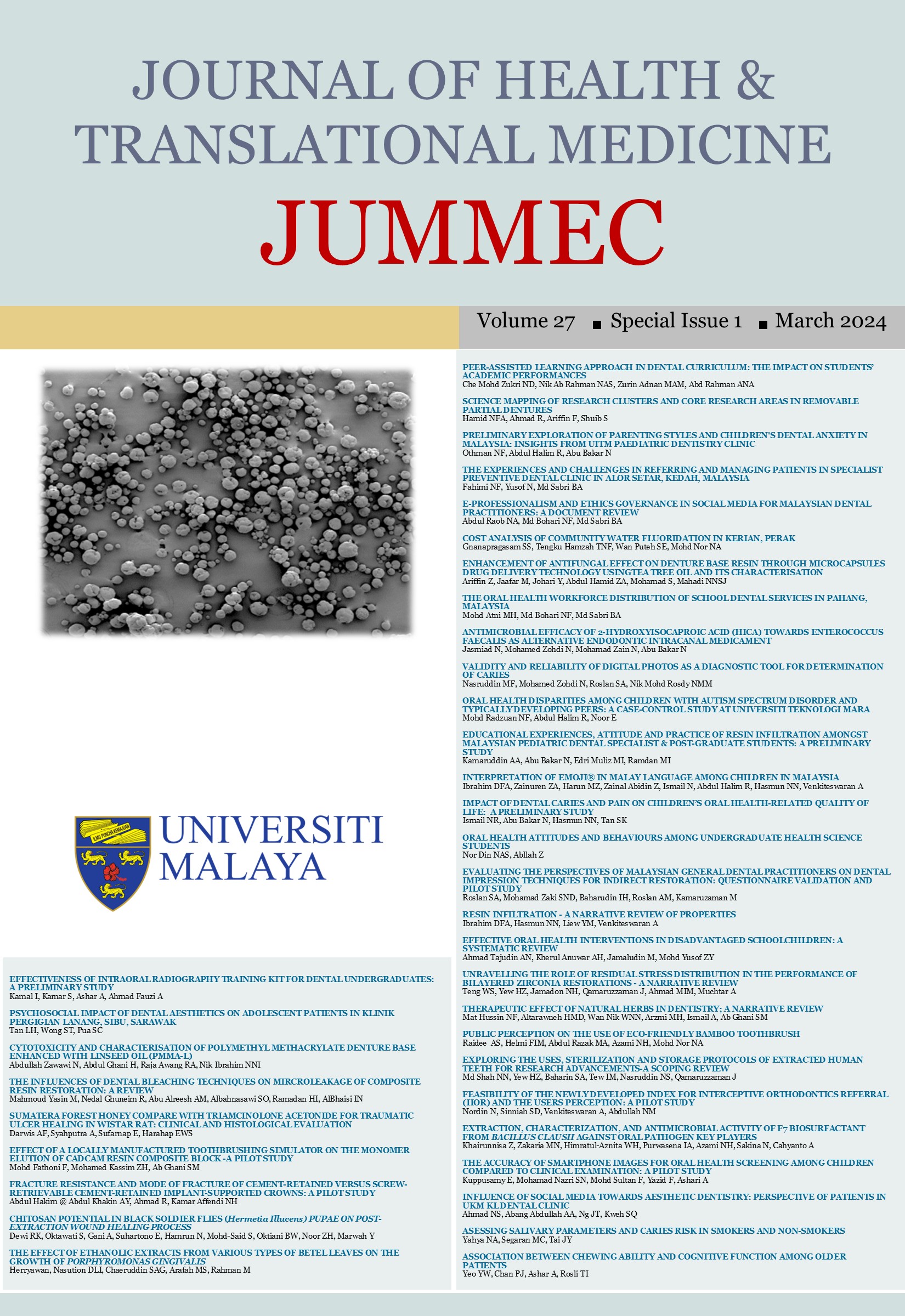EVALUATING THE PERSPECTIVES OF MALAYSIAN GENERAL DENTAL PRACTITIONERS ON DENTAL IMPRESSION TECHNIQUES FOR INDIRECT RESTORATION: QUESTIONNAIRE VALIDATION AND PILOT STUDY
Received 2024-02-21; Accepted 2024-03-09; Published 2024-03-25
DOI:
https://doi.org/10.22452/jummec.sp2024no1.16Abstract
Accurate impressions with high dimensional stability for indirect restoration fabrications are crucial. The conventional impressions technique has multiple steps and requires material manipulation, which has an inevitable degree of error. On the other hand, intraoral scanners (IOS) are currently used as digital impression techniques and have better acquisition, precision, cost and time efficiency. Malaysian GDPs have varying demographic backgrounds, exposure, experience, and preference for dental impression techniques. This study aims to validate and assess the reliability of the twenty-item questionnaire regarding the ‘Malaysian General Dental Practitioners’ (GDP’s) perspective on dental impression techniques for indirect restoration. A twenty-item questionnaire is categorised into four sections: (1) Demographic Characteristics of General Dental Practitioners, (2) Questions for Conventional Impression technique users, (3) Questions for Digital Impression technique users, and (4) Questions for both Digital and Conventional Impression Technique users. The questionnaire is assessed by three experts measured for its Content Validity Index (CVI) prior to distribution. A cross-sectional pilot study is then carried out with a sample size of 30 participants. The descriptive data are compared using a Chi-square test based on the type of impression techniques and preference variables. Fifteen items in the questionnaire had an I-CVI score of 1, while five items had a score of 0.67. The S-CVI/Ave value was 0.92, while the S-CVI/UA value was 0.76. Thirty responses were collected in the pilot study. There were seven respondents who are digital technique users and 23 who are conventional technique users. All respondents are interested in learning or improving their knowledge and skills in IOS (100%). 15 out of 20 items in the questionnaire have good content validity with I-CVI values of 1. The S-CVI/Ave also reflected acceptable content validity with a value of 0.92. Five items from the questionnaire yielded I-CVI = 0.67, and the S-CVI/UA value showed 0.76, indicating unsatisfactory content validity levels. All questions were retained for the pilot study. The questionnaire can be improved for content validity by removing or modifying questions to make them fit, correlate more to the study, and achieve a higher S-CVI value. On the other hand, the pilot study concluded that most respondents use conventional impression techniques but favour using intraoral scanners when fabricating indirect restoration.
Downloads
Downloads
Published
Issue
Section
License
All authors agree that the article, if editorially accepted for publication, shall be licensed under the Creative Commons Attribution License 4.0 to allow others to freely access, copy and use research provided the author is correctly attributed, unless otherwise stated. All articles are available online without charge or other barriers to access. However, anyone wishing to reproduce large quantities of an article (250+) should inform the publisher. Any opinion expressed in the articles are those of the authors and do not reflect that of the University of Malaya, 50603 Kuala Lumpur, Malaysia.


